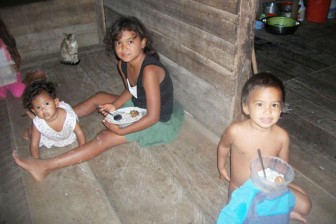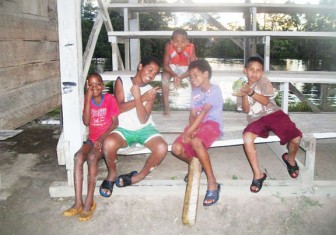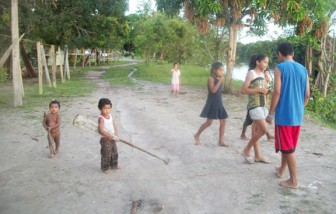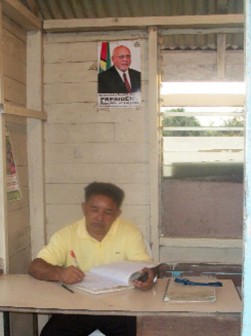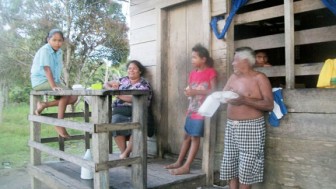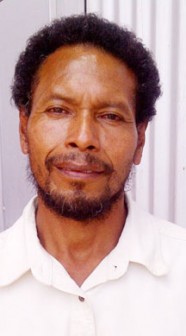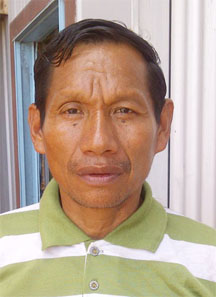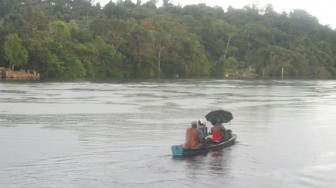Photos by Cathy Richards
Hururu Village is one of several communities in upper Berbice, Region 10. It is home to a warm and hospitable people who enjoy most of the essential services a settlement needs.
Prior to 1989 when bauxite mining began at Aroaima, the community was a pure Amerindian settlement with no more than twelve families. It began to expand as activities related to the bauxite company got under way. Today Hururu, with 26,000 acres of titled land, is home to approximately six hundred families and is listed as a titled Amerindian village with a Toshao and twelve village councillors at its helm. Following elections recently Winsbert Benjamin was elected Toshao, a position he has held in the past. His deputy is Hector Walker.
Benjamin is the successor to Herman Martin Williams who was credited with championing the development of the community during his two-term tenure as Toshao. Williams said that in addition, he served the community for eleven years holding several positions, including one year as an office manager and two 2-year terms as the secretary-councillor.
Getting to Hururu Mission involves a long, rough drive from Linden to Ituni then on through Mapletown at Aroaima. Once at Mapletown various security checks by the BCGI (RUSAL) company have to be negotiated before passing through Laddern’s Ville to access the ferry crossing to Hururu.
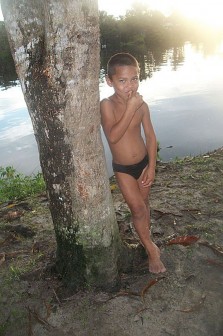 There are other options however; one can either wend one’s way to Kwakwani, cross by the ferry there and access the BCGI haulage road that leads into the community, although here again some security checks are inescapable. To avoid the rigours of the rough roads, especially during the rainy season, and to eliminate the security checkpoints, the river route is the only other option.
There are other options however; one can either wend one’s way to Kwakwani, cross by the ferry there and access the BCGI haulage road that leads into the community, although here again some security checks are inescapable. To avoid the rigours of the rough roads, especially during the rainy season, and to eliminate the security checkpoints, the river route is the only other option.
Once at Hururu the challenges of the journey are quickly washed away by the warm greetings of the residents there. The tidiness of the community cannot go unnoticed. From one end to the other there is not a single sign of a garbage heap in anyone’s yard, along the footpath or on the bank of the river. “Well this is our home and we have to take care of it; we can’t wait or expect somebody from the outside of here to come in and clean for us, we do it for ourselves for our benefit,” said Lloyd Gomes, a resident of Hururu for more than forty years.
Gomes was instrumental in introducing Stabroek News to the services centre of the small community. At the time of SN’s visit, Gomes was the security guard on duty at the compound which houses a health centre with a Medex and a trained community health worker; a two-year-old private secondary school; the government operated primary and nursery schools; a skills training centre complete with a Information Technology (IT) unit which has fifteen computers; a kitchen for the schools’feeding programme; a double flat teachers’ house; the security office with an adjoining radio phone and TV dish rooms; and the Hururu Academy Secondary School, which is owned and operated by the village council. “Our TV dish not working at the moment, but it will be up and running soon and so we can get the internet active too.” said Gomes.
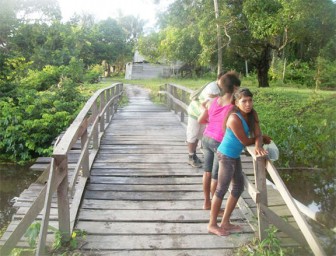
At the time the newspaper was there, school was out, and all the students and teachers had retreated to their homes. Some of the children, however, were out in the street enjoying a game of sal-out, ketch-a-koo, cricket and basketball. The older boys enjoy cycling along the path, which is also the favoured route for a romantic stroll. Others take to their paddle or engine boats and traverse the river at their leisure.
There is a large playing field in the area where most of the community social activities are held. The game of basketball is enjoyed at a private residence, where there is a large concrete court complete with original hoops. “Everybody come here for all kinds of activities; we usually have music playing, people does come and hang out, drink and them youths always playing basketball here, we are one people here man,” said the owner of the property. “We specially inviting Stabroek News to come for our Heritage Day in September, because news people don’t really come here and we so glad you come to tell the world about our loving and wonderful community,” said another resident who was in the company of several others who echoed similar sentiments.
treated, however, and according to Kersting is not fit for human consumption. “Right now we cross the river to Ladderns Ville to draw drinking water from a deep well they have on that side, so we need serious development when it comes to water for consumption purposes.”
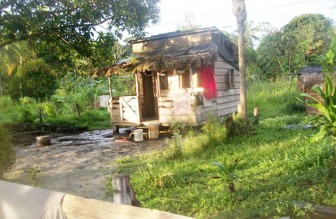
Outgoing Toshao Williams said that he is happy with the development that has taken place in the community over the past decade. Besides the various services, Williams said that they are proud to have succeeded in the construction of the road that links Hururu with Kwakwani and the support that comes from BCGI.
“They [BCGI] have trained a number of our youths to be heavy-duty operators and they are employed with the company, in addition to more than twenty-five residents who are employed by the company.” said Williams. He said that he first came to Hururu approximately seventeen years ago when he journeyed to the village to construct the teachers’ quarters and the primary school under the SIMAP programme.
“One of our main needs right now is for a main road; we really need a main road and we have to try to get sponsors somehow for that,” Williams said.
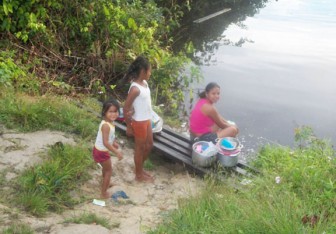
Currently the main road in the community is the footpath, which can only be accessed by motorcycles and bicycles. Otherwise residents have to walk or use the river to get to different parts of the community which spans approximately six miles along the bank of the river.
